17,500 inhabitants, 33 modules, 7km long, 3.1km high.
Earth date: 7:03 a.m. Wednesday, January 17, 2142
Venusian date: 4:46 p.m. Croday 45 advanae 61
Location: atmosphere of Venus, 55km above the surface, Babakine, Atmospheric coordinate: 0 ° N, 18 ° E
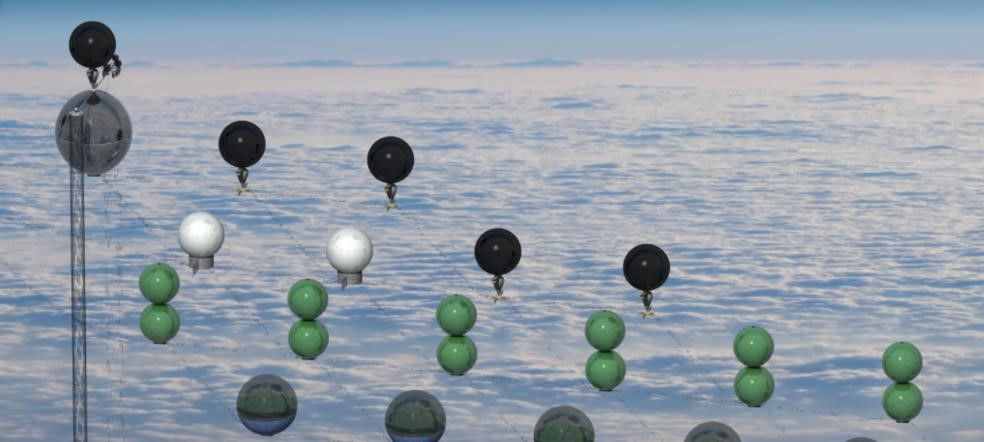
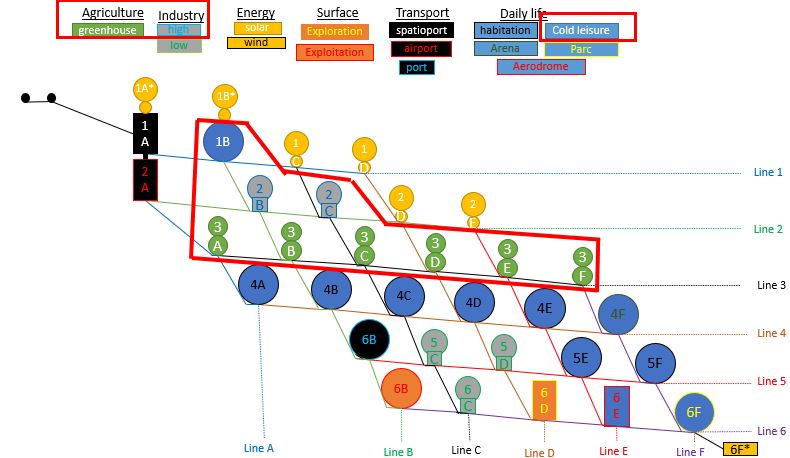
Cool leisure module (1B)
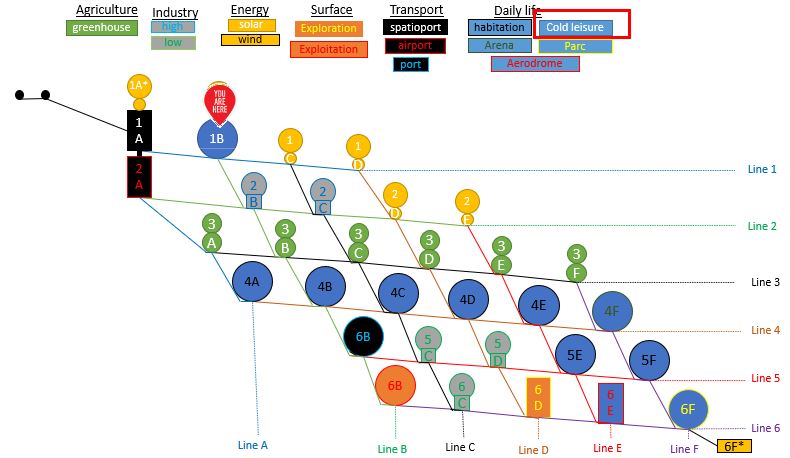
As the subway slows down, you see a huge silver bubble above you. Anna will take you off the metro, once it has stopped at the station, for the platform elevator. You were surprised by the cold that you envy and the number of people entering with skis. Indeed, as the elevator goes up, you discover that the interior of the module is a huge winter sports station. As on land, the temperature drops with altitude, so modulating, placing the very top of the colony is exposed to a negative temperature. It is covered with reflective material to avoid the greenhouse effect and allows indoor temperatures compatible with snow. Snow-covered slopes allow the practice of skiing, surfing, sledding and other activities for all levels. Only the super giant and downhill competitions cannot be organized due to the lack of height difference. A bobsleigh track also allows the development of this sport which became commonplace on Venus. At the heart of the module, several flat or slightly hilly levels house ice rinks for various ice sports and cross-country ski trails also used for biathlon.
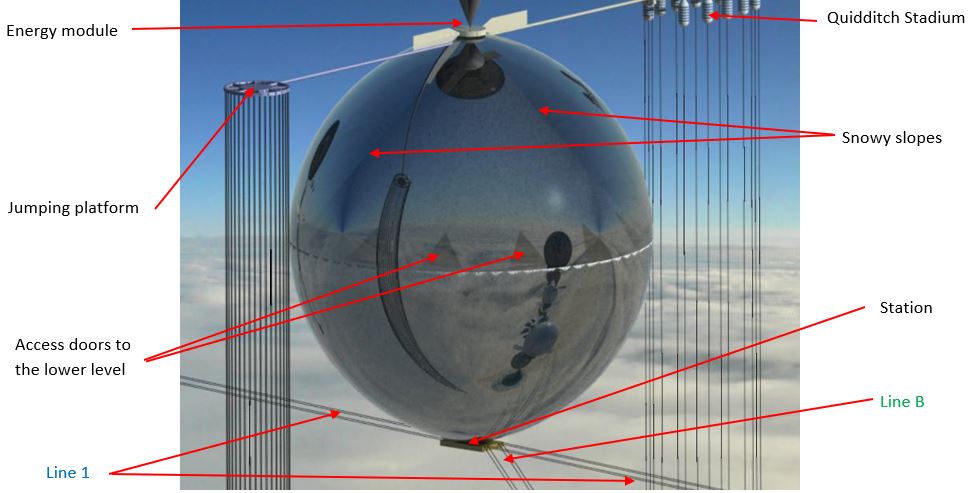
The elevator stops at the top of the winter sports station, the highest point open to the public in the colony. You went down there, because Anna invites you to discover the free fall platform. This is a very popular activity on Venus that is taught from an early age first in the wind tunnel and then in real life. With a wetsuit providing oxygen, you can fall from 60 to 50km altitude. This 10km fall represents about 3min of free fall and therefore offers great freedom of practice. Since there is no solid surface or landed at an altitude of 50km and in order to avoid having to fold the parachute on each flight, jumping platforms were invented. You also entered this platform to be deported from the top of the winter sports station module. The locker rooms in the center are surrounded by cable lifts. When the jumper (s) launch, the cabin follows and descends at the same speed as them, allowing them to enter during the free fall. Once everyone has entered the cabin, she slows down, stops and then goes up again in a few minutes, allowing another jump. As a safety measure, each jumper is equipped with a hydrogen balloon which deploys automatically below 48km allowing him to regain altitude and wait for rescues even if he is unconscious.
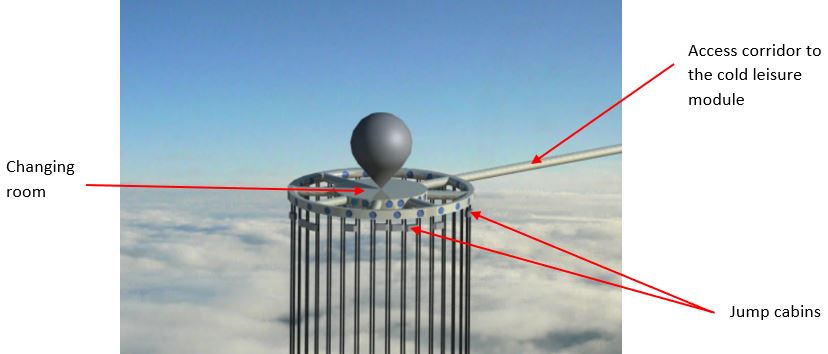
More than a simple hobby, free fall has allowed the development of many sports which now have their championship. In the beginning, sports were simply an extension of the confidential sports on Earth such as aerobatics, relative flight or contact sailing. The first settlers did not stop there and we are developing typical Venusian sports based on free fall. We can cite in particular combat sports such as wrestling where you have to stay 10 seconds on the back of your opponent. One of the most spectacular is kendo where the goal is to hit your opponent with a stick but all of this in free fall, reminiscent of scenes from a movie like matrix. There are also running sports with or without wingsuit where you have to go through holographic rings.
Of the free fall sport, the most popular is Quidditch and Anna takes you through the cold hobby module to a dedicated stadium. This sport has little to do with the sport of literature that gave it its name. It is played with two teams of seven players during 4 free falls of about 3 minutes. The goal is to score the most points by passing a ball through the rings of the opposing camp. The two outer rings, one meter fifty in diameter, yield one point each, the central ring, 0.75 meter in diameter, yield three points. Finally, the fact of touching the opposing goalkeeper in the head or the chest is worth 5 points. In return for this role of target, the goalkeeper within 20m of these rings offside an opponent he touches forcing him back into midfield. The ground is an oval 175m long and 60m wide with at each end the rings to which are attached the cabins which goes up the teams between two falls. The stadium dedicated to this sport looks like a large racket to which are attached the cables on which the teams’ cabins slide. Other cables are used to guide the stands which fall in free fall as the players put spectators in zero gravity in each round. In addition, people in the stands, at each match, supporters place their airship around the playground and display banners to encourage their team. But ultimately, the majority of spectators settle in classic stadiums in the bubbles where the match is broadcast. The drones that film these matches are also used by the referees who are modulated to window them in the center of the stadium. Given the speed of the game and the impossibility of interrupting a round in progress (free fall), the refereeing is assisted or even almost automated by sensors on the ball and the combinations of the players to confirm the contacts.

quidditch stadium
As you leave the stadium, Anna already invites you to the next game here, the Babakine Lunokhods against the Arccity Pioneers. This is a game of the very popular Premier League of Venusian Quidditch, which is sometimes broadcast on Earth. Before embarking on the Bifröst, you had actually watched the finale between the Pretorians of the capital Vesta and the Jedi of Bespin. Since this match is the subject of many sports bets, it is broadcast in “live light” which is simply the time it takes for the transmission to travel from Venus to Earth. Besides, physicists working on quantum communication are not allowed to bet on other planet sports for fear that they will develop a system to transmit scores faster than light.
High industrial zone (2B, 2C)
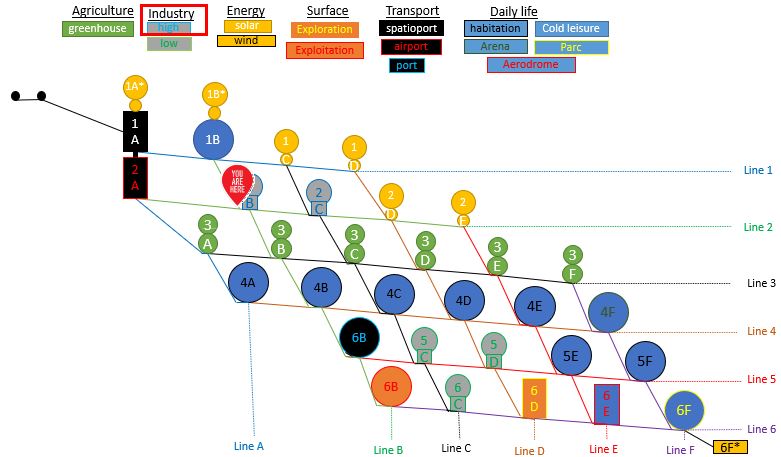
After descending from the winter sports station, you take line B (diagonal metro) which takes you down to the bottom of the colony. You started by walking past next to a white bubble surmounting a structure with large wings. This is what is commonly referred to as an upper industrial zone. The wings are used in part for cooling the hot activities that take place there. It is this need for cooling that justifies its high position in the colony, therefore in cooler atmospheric layers. You don’t have time to dwell there, but Anna explains that it is where the materials come from that allows the production of the new modules.
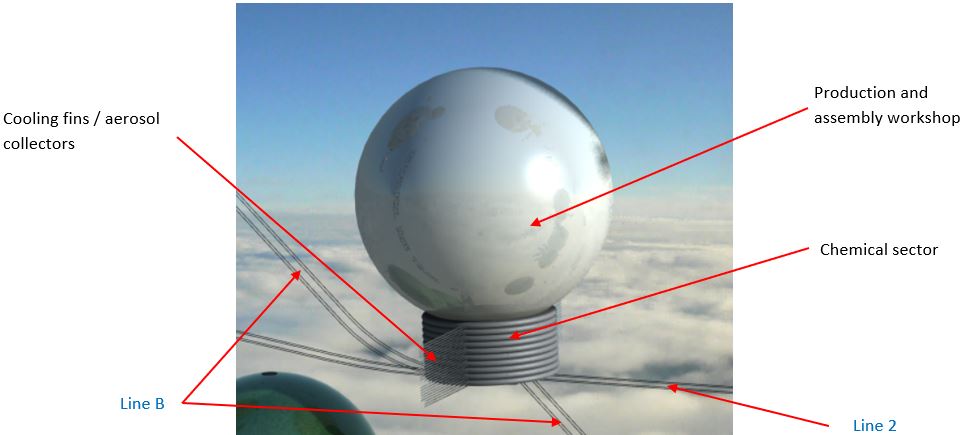
The majority of these materials are produced from elements present in the atmosphere by the wings which also act as an aerosol collector. One of the main resources is cloud acid which can be broken down into water, which can be broken down into oxygen (breathable and oxidizer) and hydrogen (fuel). With hydrogen and atmospheric CO2 we can synthesize hydrocarbons, starting with methane (fuel). With these materials and the aerosols in the atmosphere, plastic materials can be produced that are used in a large number of objects. In particular, it is possible to create PTFE capable of protecting the modules against sulfuric acid from clouds. In order to achieve maximum autonomy, the Venusian research centers have become experts in the production of plastic electronic elements using only atmospheric resources. Surface mines make it possible to provide basic materials which are not substitutable by organic chemistry. Moreover Babakine is one of the main mining colonies of Venus and Anna has already planned to show you the facilities dedicated to this activity.
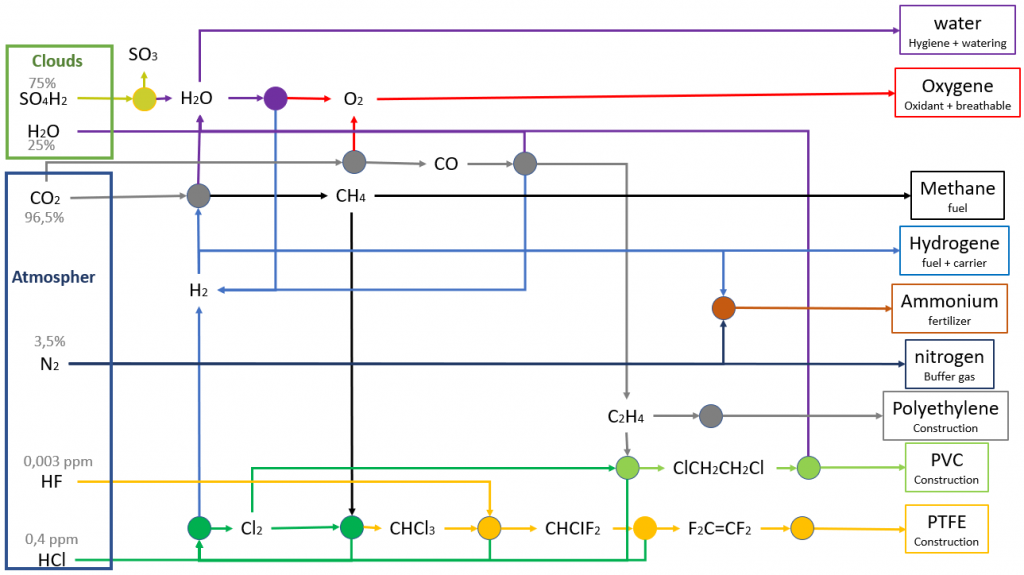
Greenhouses (3A, 3B, 3C, 3D, 3E, 3F)
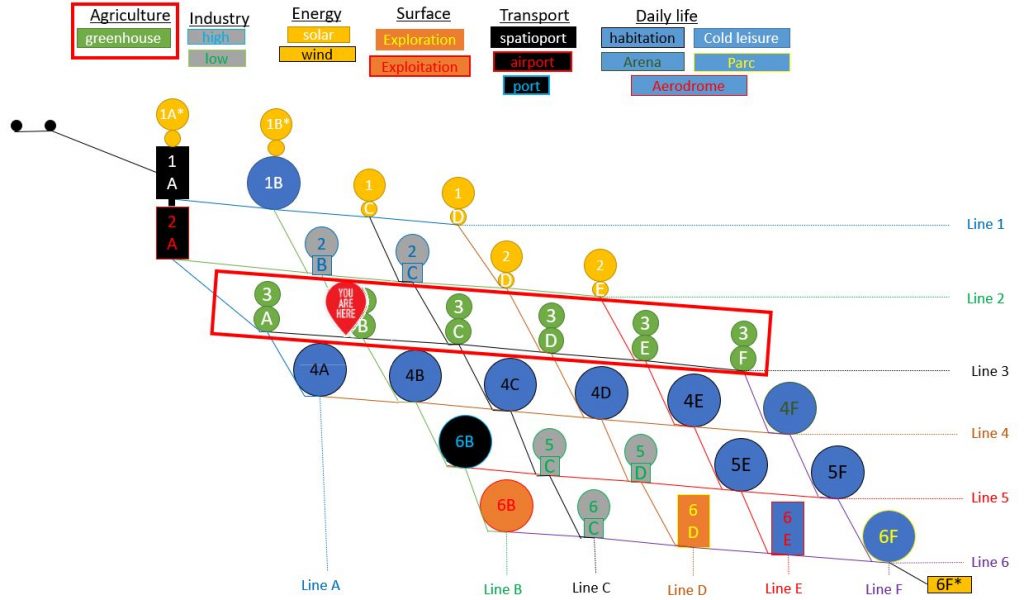
Going down another level in the colony, you reach the talons. The plants grow above the ground against the walls of the bubbles, giving them a green tint from a distance. In order to always have an optimum temperature for the crops, they are all placed at the same level forming a green line bar the colony. To vary from the vegetable, there are also breeding hens for egg-based cuisine as well as aquaculture for fish and shellfish. However, the bulk of the protein intake comes from insect farms that consume much less resources and are easier to transport than terrestrial meat animals.
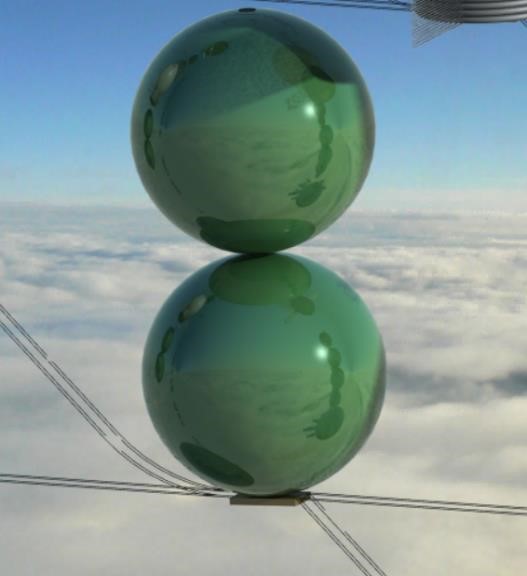
To grow the plants, growers use a fertilizer made from spirulina. The spirulina reactors are placed in the housing modules as close as possible to the sources of waste water which are used to grow them. This culture also produces drinking water and oxygen directly on site and thus avoids extracting it from the atmosphere at a significant energy cost. Spirulina is then transported in the inter-module cables along with energy, wastewater, clean water or oxygen to power the modules without a life support system or in the event of a breakdown.
